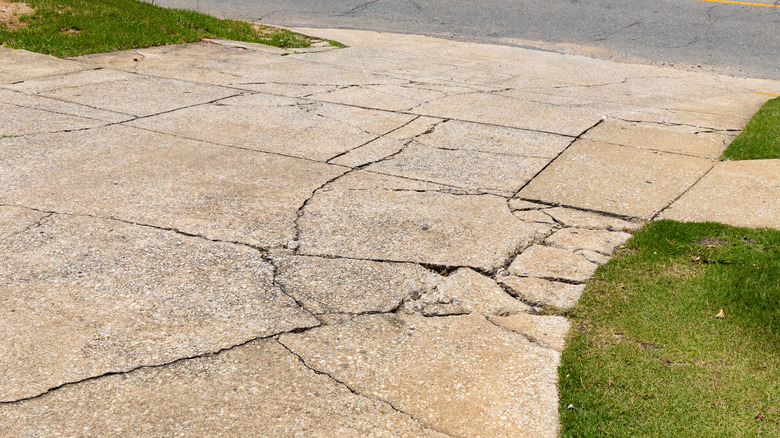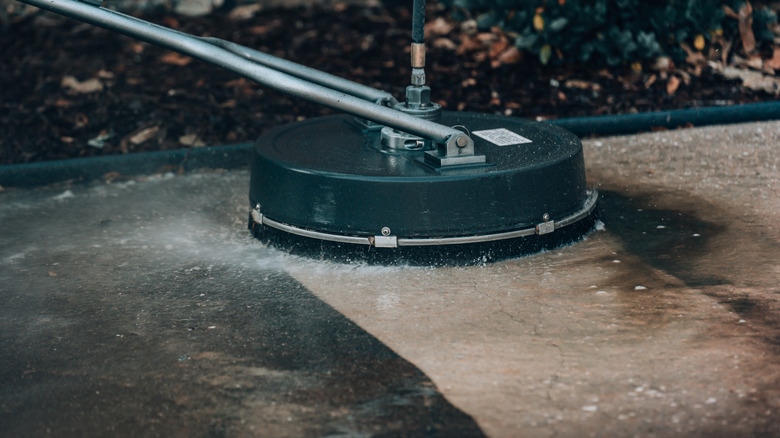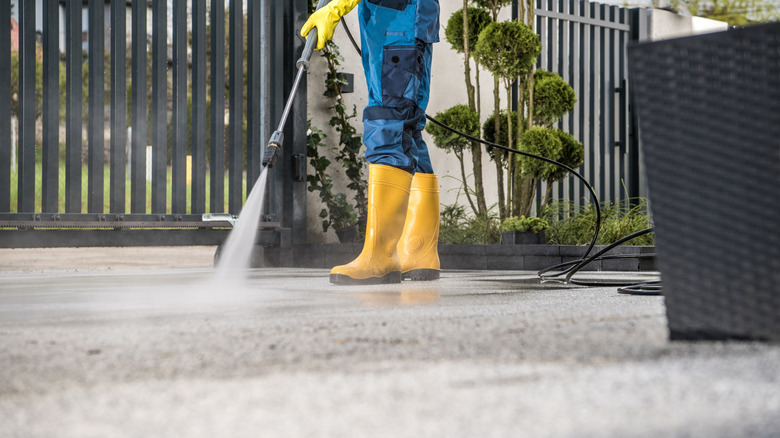The Essential Task That Can Help Prevent A Driveway From Cracking
We may receive a commission on purchases made from links.
Some people may view driveway cleaning as a cosmetic task, but regular maintenance plays a key role in preserving your pavement's structural integrity. Dirt, oil stains, and mildew are not just ugly, they ruin asphalt and concrete over time. Oil can penetrate porous materials and break down the binders that keep them together. Pressure washing your driveway at least once a year helps remove these destructive stains before they can cause irreversible damage.
The cleaning process is more than surface-level cleaning. Pressure washing away grime will reveal hidden cracks, prevent moss from growing in between, and remove slippery oil film that makes driveways hazardous in wet weather. There are some important differences between asphalt and concrete driveways, so the cleaning methods will differ slightly. For asphalt driveways, cleaning also restores the dark color that helps absorb sunlight and keep surfaces flexible. The best way to think of it is like changing your car's oil, neglect may not cause immediate failure, but it can almost guarantee that expensive repairs will be needed in the future.
Driveway cleaning that actually prevents damage
Effective cleaning of your driveway requires more than spraying it down with a hose. For concrete, apply a cleaner that is specifically formulated for driveways, like Simple Green Oxy Solve Driveway Cleaner from Amazon. These cleaners break down oil and grease without harming the concrete. Let the solution sit for about 10 minutes before washing. Use a surface cleaner attachment, if available, on a pressure washer at around 2,000 to 2,800 PSI, and work in small sections around your driveway to prevent streaking. Be sure to clean from the highest point of the driveway down to prevent dirty water from getting into your freshly revealed cracks.
Asphalt requires a little more care when cleaning. Start at the lowest PSI settings on your washer and do not use hot water, which can soften the asphalt. As far as how to clean up oil stains in your driveway, sprinkle some kitty litter to absorb spills, sweep it up, then scrub with a degreaser. After washing, look for any new cracks and try to fill with sealant quickly while the surface is still clean and dry. This is also a good time to check for any drainage issues you might have. If you see puddles sticking around too long, consider leveling or asphalt patches to fix the problem.
When & how often to clean for crack prevention
Knowing how often you should pressure wash your driveway and timing your cleanings strategically is a great way to ensure a long-lasting driveway. Early spring cleaning will help reduce winter's salt and de-icer residue before the summer heat begins to bake them into the surface. A fall cleaning is perfect to get to the stains that leaves and organic matter leave behind. If you are in a snowy climate, a fall cleaning also helps prepare for the winter, allowing sealants to lock in before the freeze-thaw cycle begins.
Between cleanings, stay diligent with spot-treatments. Oil can break down asphalt quickly, so getting to it fast is important to the structure of your driveway. Use a stiff brush and dish soap for small stains to avoid unnecessary full washing. If you have a sectioned driveway with concrete joints, replace cracked or missing caulk annually to avoid water penetration, which weakens the connections. Also, consider applying a penetrating sealer every two to three years. These sealers help repel water and oil throughout the year with less work required on your part.


